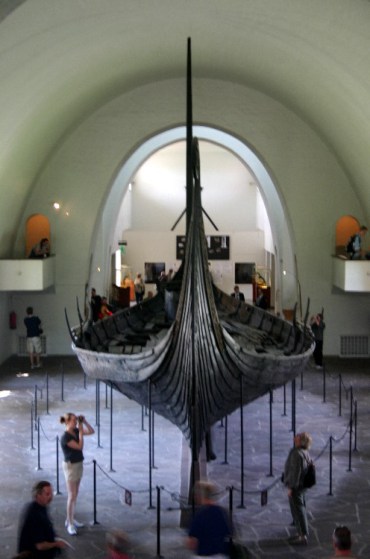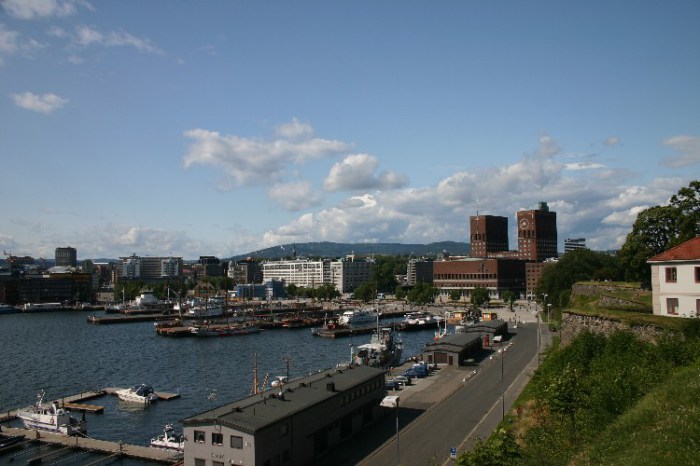We start our first morning in Oslo Norway by taking the ferry to the suburb of Bygdøy,
full of beautiful homes and museums. As befits a maritime nation, 4 of the 5 museums across the water are concerned with ships – including the Fram and the Kon-Tiki. We are heading to the Viking Ship Museum – where 3 of the Viking boats are on display. These boats were all built around 850 AD and discovered in the mid-1800s and survived through the ages because they had been used in Viking funeral rituals – and were buried in clay, which preserved them. Much of what is known about Viking ships comes from these 3. We look at them in awe – these boats are beautiful, the carving quite beautiful – and cannot imagine sailing in these open ships, with almost no protection from the elements, across the North Atlantic to Greenland, Iceland and Newfoundland.
A Hill Overlooking Oslo Harbour
After walking around the neighbourhood, enjoying the sunshine, we take the ferry back to town, and walk through the restored waterfront, full of cafés and restaurants and night clubs. Then we move on to the Akershus Fortress, situated on a hill overlooking the harbour, some of it dating back to the 1300s. Still an active military site, there are a number of museums inside. I visit one, the Resistance Museum, which documents Norway’s fight against the Nazis, who positioned over 400,000 troops all over the country, because they expected the Allies to commence their counterattack in Norway. I learn why so many pubs around Norway are named “Churchill’s” or “Sir Winston’s” or similar. More chillingly, I learn that the building in which the museum is located was used by the Nazis as a prison for captured resistance fighters and that the exterior wall was a favoured place for executions.





Comments